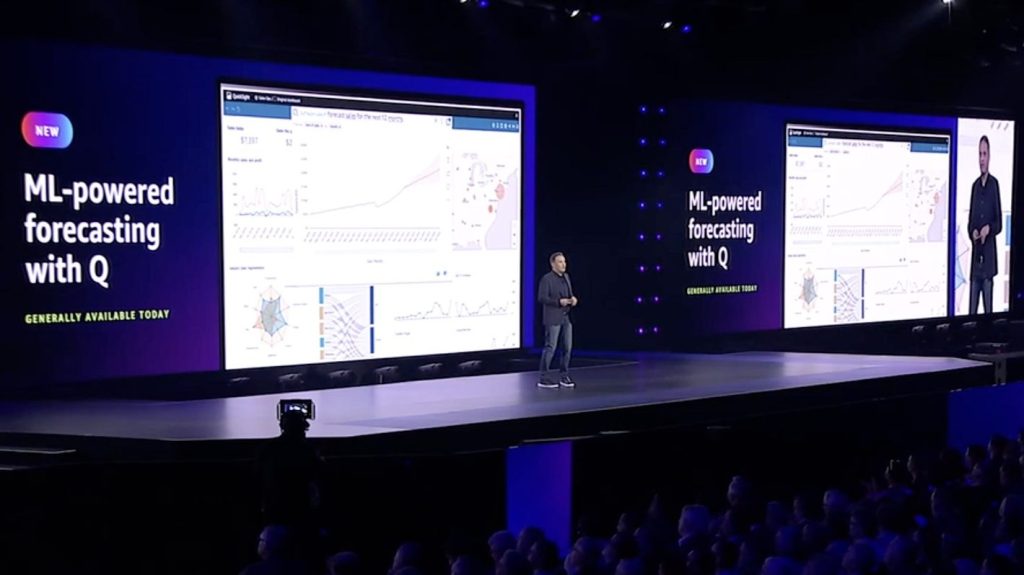The tech industry has made a full 180-degree turn with regard to open source in the 16 years since Matt Mullenweg founded Automattic, a major commercial backer of open source content management system WordPress.
Microsoft, whose executives once used phrases like “un-American” and “cancer” to describe open source, is now one of the world’s largest contributors. Elastic, Confluent and GitLab have proven that startups, too, can layer commercial success on top of open source projects.
Even true believers can be shocked by the extent to which open source has succeeded. “To me, one of the most incredible examples of this is Chromium being used not just by Brave, but by Internet Explorer,” Mullenweg, who is also CEO of Automattic, said. “That’s the tech equivalent of peace in the Middle East — it felt so far away and unimaginable.”
WordPress and Automattic are key leaders in this trend. WordPress remains a vibrant project: Around a thousand active “core” contributors engineer the product, while a massive, 55,000-strong group of “extender” contributors builds themes and plugins that expand the platform’s functionality. The more than 28 million WordPress sites represent about 40% of the web, making the project among the most deployed open source platforms.
Mullenweg, however, views all of this as merely a starting point. In his reckoning, WordPress could double its current scale in the coming years, a proposition that can make even the most bullish open source software engineer nervous.
To get there, Automattic has to shepherd and evolve its developer community even as it empowers more and more of its open source contributors to take leadership roles in the future of the WordPress ecosystem. That hasn’t always gone well, as we will see with a transition around a new version of WordPress called Gutenberg, but ultimately, the company is doubling down on community engagement, hoping that growth in the next 16 years of Automattic will be even faster than the last era.
One company that doesn’t rule them all
Both large and small companies contribute back code and time to the community, often following some version of Mullenweg’s Five for the Future initiative, which asks organizations using WordPress to spend 5% of their resources contributing to its further development.

Automattic may be the largest contributor in the WordPress community, but there are many other companies who lend to the success of the ecosystem. The largest are mostly domain registrars such as GoDaddy and Bluehost, which use their lead generation from registrations to upsell customers on WordPress hosting.
Scores of other companies round out the ecosystem. Most are small design agencies and paid plugin developers, such as Yoast, a search engine optimization tool that has over 12 million websites.
Then there are the thousands of individual contributors. Contrary to the perception that open source developers work exclusively for free, most open source communities include the concept of “sponsorship,” in which a commercial company like Automattic underwrites an open source developer to keep working on the project full time.
In its annual open source contributor survey from 2020, the Linux Foundation and The Laboratory for Innovation Science at Harvard found that more than half of core and frequent contributors to open source projects were financed for their work, either by their current employer or by a third party. That proportion is actually lower for WordPress, where only about a third of developers are believed to be sponsored.
Founding privilege
While thousands of individuals and companies contribute to the development of WordPress, it’s clear that Automattic plays the lead role in shaping the community, even though many paid contributors to the project are not even sponsored by the company.
One of the founding strengths of WordPress is that it was conceived without immediate commercial intent. The project started two years before Automattic, as we saw in part one of this TC-1, so no company’s leadership was written into the project’s creation. Mullenweg was simply a co-founder of the project, albeit one of its most active public cheerleaders.
Even after Automattic launched, a few other startups seemed poised to lead the community. Hosting service WP Engine, for instance, was founded in 2010 and grew quickly, raising nearly $300 million, according to Crunchbase.
Automattic gained one sustainable advantage early on, however: It successfully secured the WordPress.com domain as a counterpart to the open source project’s WordPress.org. That ownership gave Automattic symbolic and long-lasting weight within the community.
“Because we were the first to do it, we had the name, and our service took off. The copies sat there for a while and gave up,” recalls Toni Schneider, who served as Automattic’s CEO during the company’s early years.
Automattic led big-picture development initiatives, organized development efforts and arranged meetups and conferences, but it also needed to be cautious not to smother the community with its own plethora of business initiatives.
“We were very clear that we’d just do hosted WordPress and not all these other things that other businesses could do. That’s a slower pace versus gobbling everything up, but it leads to an incredibly strong and diversified ecosystem that’s now almost impenetrable,” says Schneider.
It worked: For the most part, even companies that are direct competitors within the WordPress ecosystem get along amicably.

“We’re partners with many companies that may seem like competitors. Matt often says we want to grow the whole pie, not just our piece of it,” says Monica Ohara, the chief marketing officer for WordPress.com. “There are times that a customer wants to move off [WordPress.com], and we’ll help them do that and go to another host.”
Leadership and its discontent
For all of its investment into the WordPress ecosystem, Automattic isn’t always seen as a benevolent presence.
Any expansion of the company’s product lines (and there have been many) can bring about protests as the company potentially crowds out independent businesses. Most recently, a move by Automattic to build websites for customers under the moniker “Built by WordPress” earlier this year sparked accusations and widespread concern among individual design shops that Automattic could harm their businesses.
While such disputes are hardly uncommon in the competitive commercial offerings surrounding open source projects, there have also been significant revolts over WordPress’ design and codebase.
For instance, the Gutenberg effort, a complete overhaul of the WordPress publishing interface started in 2017, caused an outpouring of criticism from some of the community’s lead developers. It also resulted in a brief dip in the number of project contributors, as some developers defected or created their own forks of WordPress, such as ClassicPress.
A separate open source publishing platform and company called Ghost, which first launched its software in 2013, also saw some growth. Founded by a former Automattic employee, it was modeled in a similar open source/for-profit dual organization model as Automattic.
The controversy ignited because Gutenberg didn’t just add new functionality but would rather redefine the entire philosophy of the publishing system. Ever since it was created in 2003, WordPress was designed to publish HTML to the web. HTML is easy to learn and use, which meant that the content management system was accessible to a massive audience.
That usability has been a huge factor in the platform’s wide adoption, but companies using WordPress increasingly needed more sophisticated rich-media displays of their data — something that the platform’s original editor was never designed to accommodate. Gutenberg would be the solution, offering richer “blocks” of content, while necessarily adding more complexity to what had been a simple editor.
While discussions were at times strident (one commenter suggested “Make Gutenberg a plugin for masochists”), Mullenweg and Automattic stubbornly pushed on. Some contributors later realized that he’d been dropping hints about Gutenberg’s direction for years.

“With Matt, sometimes he’s got this vision that nobody would guess we need,” says Josepha Haden Chomphosy, the executive director of the WordPress project. “Gutenberg would be an example of that. We were using PHP (a popular web programming language), then he said we’re going to be using JavaScript and we’re rewriting this CMS everyone knows to be based around blocks, and use WYSIWYG [‘what you see is what you get’].”
Without a single founding leader heading the change, Chomphosy thinks Gutenberg wouldn’t have happened — or at least, not as early and well as it had.
“Would we have done something different if the community were managing it? Absolutely. There is something to be said for the ability of someone who’s doing it full time or has a clear vision — to get it done but also take a lot of that negative feedback,” she says.
Many open source projects have found it challenging to strike a balance between debate and decision-making. While they remain democratized and mostly open to community participation and leadership, many projects end up empowering a so-called BDFL (benevolent dictator for life) as a way to keep momentum in the face of dissensus.
That can lead to permanent schisms and long-lasting community feuds, such as what happened within the Python language community when it developed a new version that was not backward-compatible with existing code.
WordPress has mostly avoided such schisms, but its increasing scale and scope make such defections easier to imagine in the coming years.
Open sourcing leadership
Partly smarting over the Gutenberg controversy, Automattic hired Chomphosy in 2015 and elevated to her current role in 2019 to help add more structure within the WordPress open source ecosystem. Her team currently numbers over 60 people who work solely on managing and organizing the community.
“For anyone who has ever tried to start an open source community, having a sustaining partner like Automattic is vital,” said Chomphosy. “The administrative work that goes into making open source possible is vast and complicated. The work I’m doing to keep everything moving is not only broad ranging … it’s also a ton of low-level administrative activity. You just don’t see that from the outside.”
Part of the organizational problem for most open source projects is that contributors enter as developers or designers — few opt to manage or lead others. Chomphosy’s team is seeking to change that.
“What sets WordPress apart is, we’re training leaders about how to do the work that I do in an open source way. We’re basically half leadership training and half WordPress maintenance, and that’s never seen except in the way we run the project,” she said. “We insist that the people who are learning how to lead with an open source framework are doing it with the basics of ethical communication.”
When you look into the abyss the abyss looks into you
Mullenweg and Automattic have big dreams for the future of publishing. He envisions WordPress will one day supplant the dominance of platforms like Facebook, reopening the web. He insists that WordPress has the opportunity to power the majority of sites on the web.
Such sentiments can draw sharp criticism.
“A nasty, monopolistic goal,” summarized David Heinemeier Hansson in a tweeted response to an interview in which Mullenweg mused about reaching 85% market share.
“We want every website, whether it’s e-commerce or anything to be powered by WordPress” is a nasty, monopolistic goal. Listening to Matt muse about 85% marketshare dreams is a real downer. But $300m is a down payment on monopoly dreams. https://t.co/hf4HShISug
— DHH (@dhh) September 19, 2019
“I guess a broader way to outline my true goal: That 85%+ of the world’s websites are powered by open source content management systems,” responded Mullenweg. And, in a later reply: “Given there are so many options and the web can’t force anyone into anything, a platform achieving that scale would mean it built something really remarkable, an extreme product/market fit.”
It’s telling that nobody is scoffing at the idea that open source could dominate the consumer web. In large part, that possibility has been created by the failure of private companies to fill the space. While companies like Wix, Squarespace and Shopify have built enviable revenue streams — and earn far more than Automattic — their growth is limited by the need for their proprietary software to serve lucrative niches rather than having the wide focus of WordPress.
A pullback from walled gardens is also benefiting the platform.
“We’ve seen a huge amount of trust go into a few parties, the Googles and Facebooks of the world,” says Nick Gernert, CEO of WordPress VIP. “That’s not the worst thing, but the consolidation has led to situations like AWS and Parler, or the platforms deplatforming people. I don’t have all the answers on this, but generally what we’re seeing is there’s going to be a reckoning on the platform side and internet side in how much trust we’re putting in a handful of entities along the way.”

Gernert predicts: “We see organizations taking deeper ownership of their channels, not ignoring other platforms, but they need to drive back to owned platforms.”
Everyone at Automattic acknowledges that there are benefits to platform diversity. Even walled gardens have their place — they provide an accessible, easy-to-learn entry point to the web. But excessive reliance on platforms, says Chomphosy, ends up constraining users.
“I think platforms that are incredibly turnkey make it so you don’t necessarily have to hone your 21st century skills, and when those skills rust or atrophy, it really hamstrings you. One, as a modern person in the workforce, but two, as someone who interfaces with the world through technology,” she said.
“The open web gives you a chance to work those muscles again. It makes you figure out info about copyright versus copyleft, determine whether information is valid or not, all these things that have gone away with closed-source platforms.”
That’s inspiring stuff, but when you’re talking to Automattic employees, that’s pretty much par for the course, which could be another reason WordPress may ultimately win: It’s full of true believers.
“There’s a Walt Disney quote. ‘We don’t make movies to make money, we make money to make more movies,’” said Paul Maiorana, the CEO of WooCommerce. “That’s very much how we operate the company. The mission is why we’re here.”
It’s a mission that knows no bounds. Mullenweg is a follower of Geoffrey West, a famed biologist who theorized that cities can grow endlessly, while companies are more akin to mortal organisms.
“Part of my life’s work is trying to make WordPress something that looks more like a city,” Mullenweg said. “Companies always die. Cities never die. There’s networks of things that can be created, and once they reach a certain scale, they’re somewhat invulnerable.”
Invulnerability may be a lofty goal, but with the power of a dedicated community behind it, Automattic’s aspirations may just come true as it seeks to build atop the community to create neighborhoods of products and ideas. And these neighborhoods within WordPress that Automattic is looking to build is where we turn next in part three of this TC-1.
Automattic TC-1 Table of Contents
- Introduction
- Part 1: Origin story
- Part 2: Open source development
- Part 3: Acquisitions and future strategy
- Part 4: Remote work culture
Also check out other TC-1s on TechCrunch+.
Can social and e-commerce transform the future of the open web?
Update October 19, 2021: Used a more up-to-date Yoast user count number of 12 million websites, instead of 5 million websites.































Comment